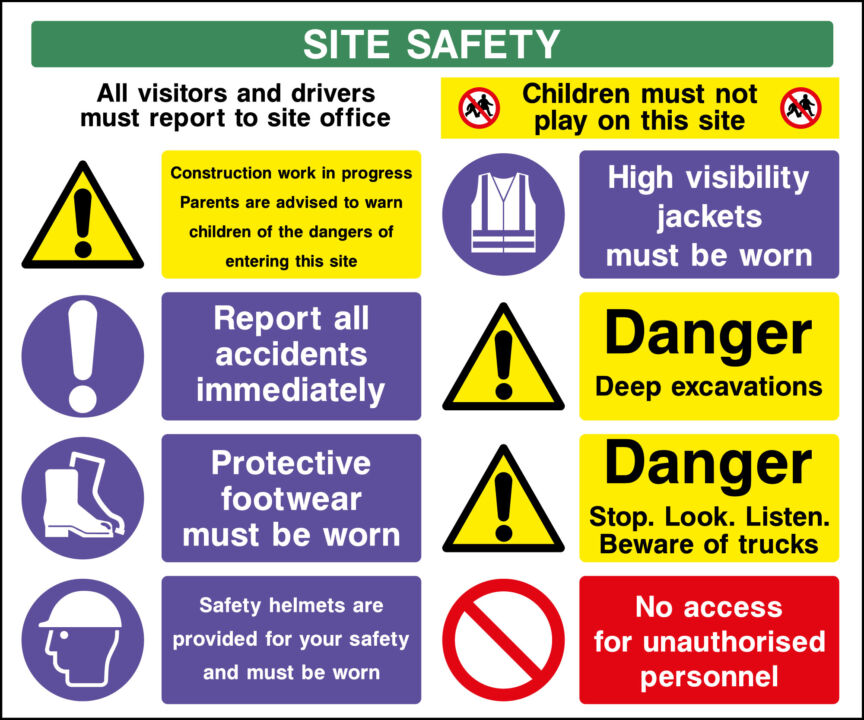In any workplace, ensuring the safety of employees is paramount. Every decision made, from machinery maintenance to health protocols, should consider the protection of everyone involved. One essential component of a safe workplace is the use of safety signs and supplies. These simple yet effective tools guide employees through hazards and ensure that everyone understands the necessary precautions.
The Role of Safety Signs in Workplace Safety
Safety signs are often the first line of defence against potential accidents. These visual cues are designed to communicate critical safety information at a glance, preventing misunderstandings and reducing risks. From warning signs about slippery floors to fire exit signs, each sign serves a specific purpose. The significance of safety signs cannot be overstated—without them, employees might not be aware of hidden dangers around the workplace, putting themselves at risk.
Clear, well-placed signs can prevent injuries and save lives by ensuring employees know what to do in the event of an emergency. For instance, hazard symbols for chemicals, electrical equipment, or high-pressure areas inform workers of the need for protective measures. Regular audits of these signs ensure they remain visible and effective.
The Importance of Safety Supplies
Alongside signage, safety supplies are critical to mitigating workplace risks. Personal protective equipment (PPE) such as gloves, helmets, and safety glasses is essential to maintaining a safe working environment. These supplies are tailored to specific industries and hazards, offering a protective layer against potential dangers such as machinery, chemicals, or extreme temperatures.
The presence of safety supplies also plays a psychological role in promoting workplace safety. When employees feel that their safety is a top priority, it fosters a sense of security, making them more likely to follow safety procedures. This leads to fewer accidents and injuries over time.
Enhancing Communication with Visual Cues
While safety signs act as visual warnings, incorporating colour-coded systems can further improve communication. For example, red signs generally signify danger or prohibition, while green signs often indicate safety or permission. This universal system helps employees from various backgrounds and languages understand instructions quickly. The power of colour in conveying critical safety messages cannot be overlooked, as it creates instant recognition of potential hazards and required actions.
Additionally, using clear, easy-to-read fonts and universally recognized symbols ensures that the signs are understood by all employees, regardless of their familiarity with the language or the workplace environment. In high-risk areas, this can make a world of difference, where quick actions can prevent injuries.
A Proactive Approach to Workplace Safety
One of the most effective ways to prevent accidents is through a proactive approach that includes regular safety training and the consistent use of safety signs and supplies. Employees should be regularly educated about the significance of these items and how to use them effectively. Training sessions should cover everything from reading safety signs to correctly using protective equipment.
Creating a culture of safety, where workers feel empowered to speak up about potential hazards and use the available resources, leads to a safer and more productive workplace. Having the proper safety supplies readily available and accessible reinforces this culture, ensuring that employees always have the tools they need to stay safe.
Legal Compliance and Workplace Safety
In many industries, the use of safety signs and supplies is not just a recommendation; it’s a legal requirement. Health and safety regulations mandate specific signage in areas like construction sites, factories, and laboratories. Failing to comply with these regulations can result in heavy fines or worse, serious accidents that could have been prevented. Ensuring that the workplace is equipped with the necessary safety signs and supplies not only protects employees but also helps businesses stay compliant with relevant laws and regulations.
Conclusion
Incorporating the right safety signs and supplies into your workplace is an easy yet highly effective way to enhance safety and protect employees. Whether it’s providing clear visual cues or ensuring that employees have the proper protective gear, these tools play an essential role in creating a safer, more efficient work environment. By fostering a culture of safety, businesses can reduce accidents, maintain legal compliance, and promote the well-being of all employees.




